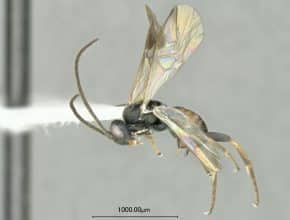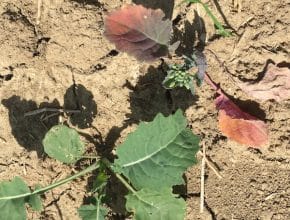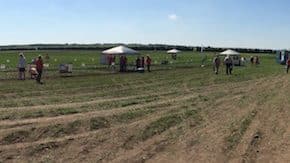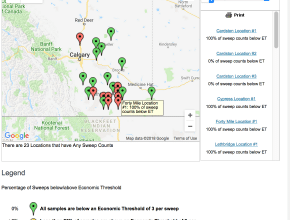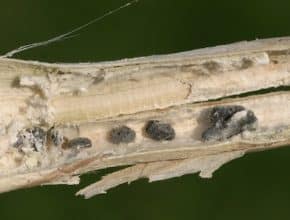Home / Archives for July 2018 / Page 3
-
Entomologists were excited to find a known diamondback moth parasitoid, the 2mm-long Diolcogaster claritibia wasp, at very high numbers in Alberta canola fields over the past couple of weeks…
-
Take a random look at a few canola roots in each field to see what's going on. Also dig up the root area for plants that look less than healthy for no apparent reason. This plant has foot rot…
-
In light hail, canola can sometimes over-compensate and produce even higher yield. In serious hail situations where entire flowering branches are knocked off, plants that are still actively flowering can produce new branches. This will set back maturity, but with enough season left, these new branches can produce a decent yield…
-
Manitoba: Sclerotinia stem rot: Timeline for infection Saskatchewan: Sclerotinia stem rot: Timeline for infection Alberta: Map of the Week – Cabbage seedpod weevil counts…
-
canolaPALOOZA 2018 was at AAFC Saskatoon June 25 and AAFC Lacombe June 27. Here are the top 10 questions from the two events…
-
Can you identify these four insects?…
-
Alberta Agriculture's cabbage seedpod weevil survey results for 2018 are mapped. In areas with a red marker, 25% or more of samples reported are above the threshold…
-
The three points of the disease triangle are host, pathogen and environment. When it comes to sclerotinia stem rot in canola in Western Canada, the disease triangle hinges on one component: Environment…
-
The sclerotinia stem rot infection cycle begins when sclerotia in the soil (left from the last time an infected crop was produced on that field) take up enough moisture to germinate and form little mushrooms known as apothecia. Spores are then released into the air from the mushrooms. Under ideal warm and moist conditions, it takes about two to three…

